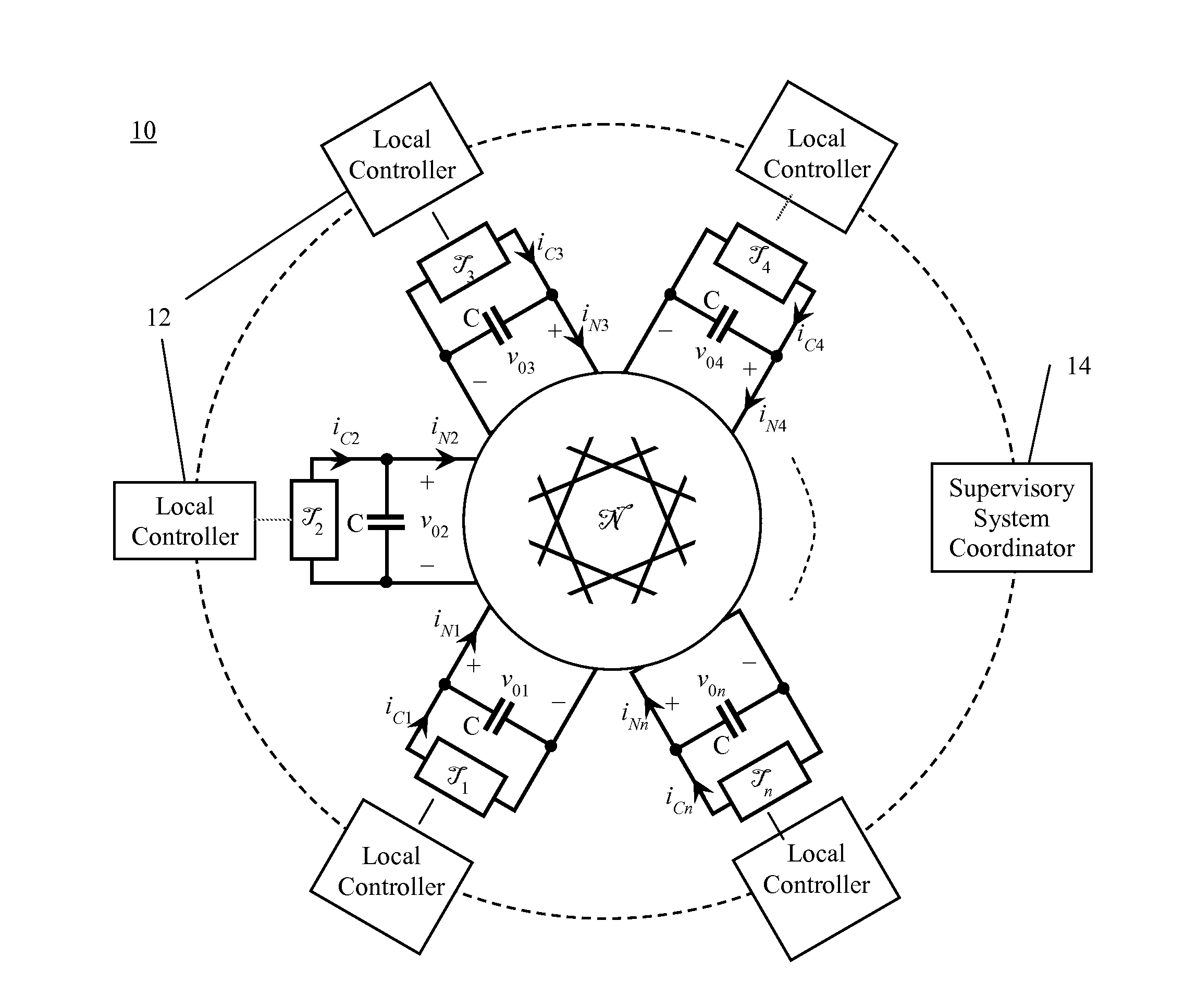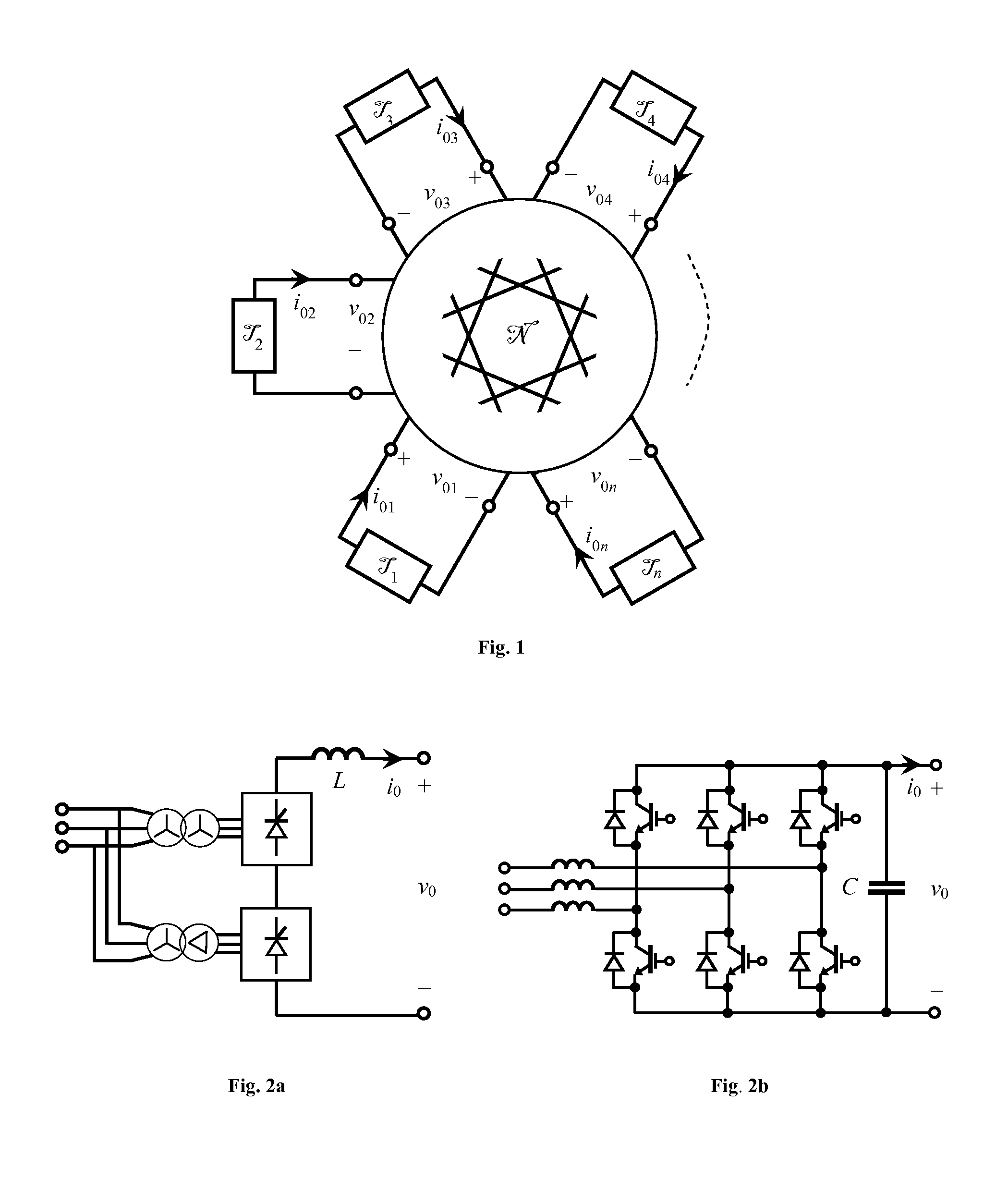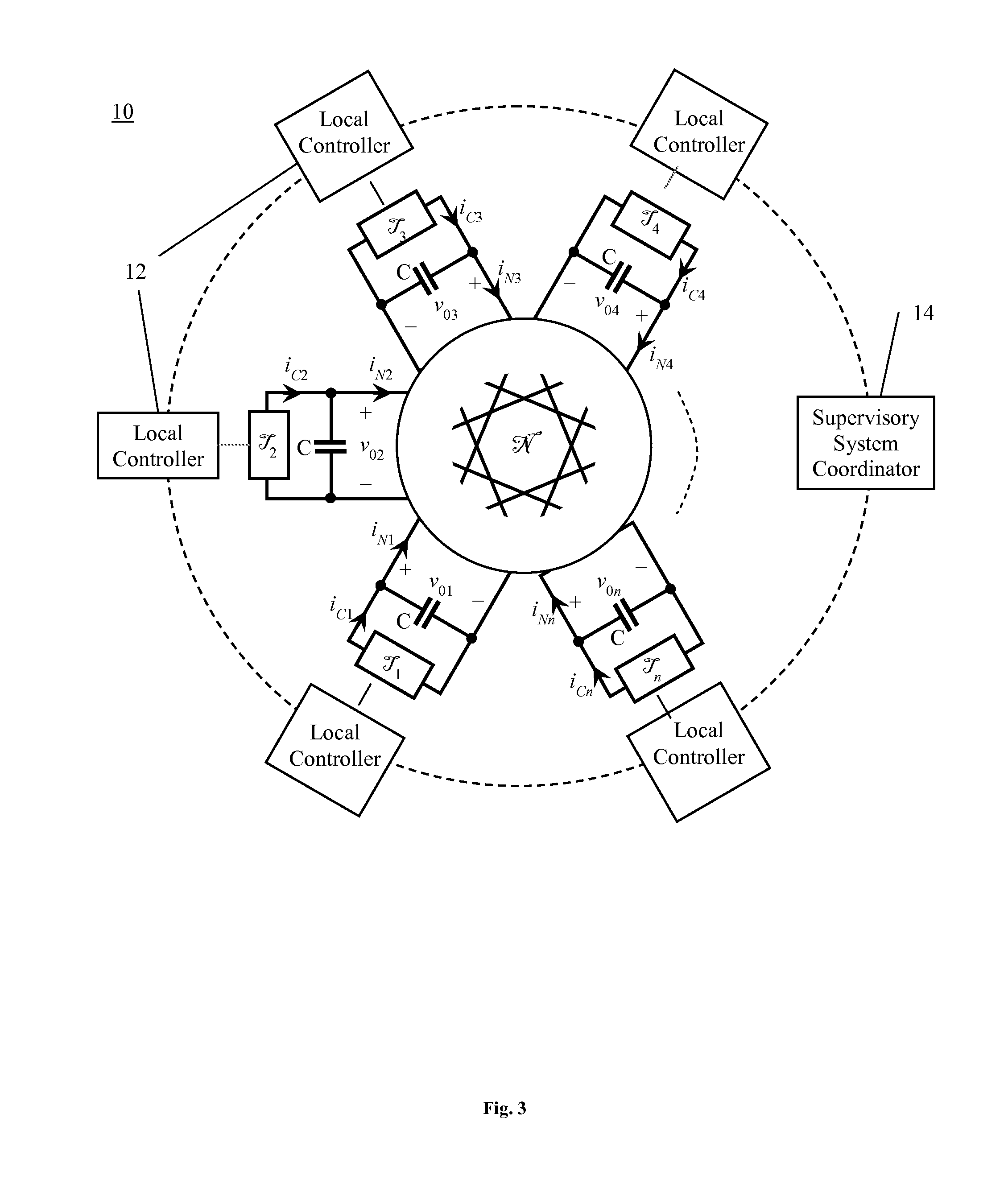Multi-terminal DC power systems employing autonomous local control methods
a dc power system and multi-terminal technology, applied in the direction of dc source parallel operation, wind energy generation, electric power transfer ac network, etc., can solve the problems of increasing control complexity exponentially with the number of terminals, and it is more difficult to implement such control for pwm-based systems, so as to facilitate formation and operation of multi-terminal dc systems, enhance transient stability, avoid possible conflict in steady-state operation
- Summary
- Abstract
- Description
- Claims
- Application Information
AI Technical Summary
Benefits of technology
Problems solved by technology
Method used
Image
Examples
Embodiment Construction
[0051]According to the present invention, local direct control of converter-side voltages and currents provides a new advantageous way to operate multi-terminal DC power systems. Such control requires only local variables that are directly measurable at each terminal. This allows each terminal control to be designed and implemented independently from other terminals. In this manner, different terminals can operate antonomously while system stability is ensured by the selection of appropriate control modes.
[0052]Supervisory control coordination requiring only occasional or intermittent exchange of low-bandwidth signals may be incorporated at the system level to avoid possible conflict in steady-state operation and to enhance transient stability. The combination of autonomous local control find simple supervisory system coordination greatly simplifies system design and improves system reliability, as well as tolerance to interrupts and faults in communication. The approaches of the pr...
PUM
 Login to View More
Login to View More Abstract
Description
Claims
Application Information
 Login to View More
Login to View More - R&D
- Intellectual Property
- Life Sciences
- Materials
- Tech Scout
- Unparalleled Data Quality
- Higher Quality Content
- 60% Fewer Hallucinations
Browse by: Latest US Patents, China's latest patents, Technical Efficacy Thesaurus, Application Domain, Technology Topic, Popular Technical Reports.
© 2025 PatSnap. All rights reserved.Legal|Privacy policy|Modern Slavery Act Transparency Statement|Sitemap|About US| Contact US: help@patsnap.com



